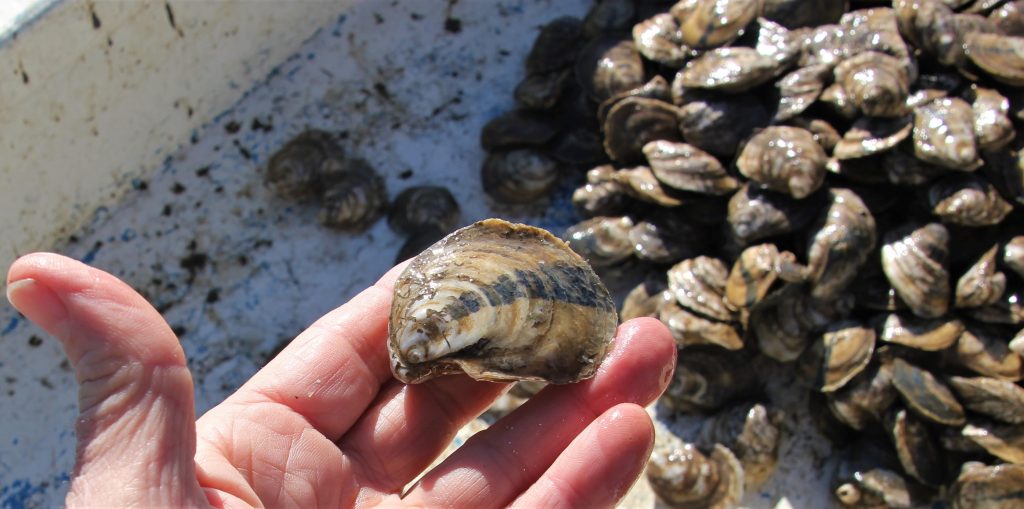Think I am exaggerating? No chance. So, here’s the deal: the Mississippi oyster industry is in a nose dive. Pre-Katrina 500,000 sacks of oysters were harvested in this state. Katrina was compounded by the BP oil spill and the opening of the Bonnet Carre spillway, which sends millions of gallons of fresh water into Lake Pontchartrain, through the Rigolets, and then, with catastrophic results, across the 14,00 acres of oyster beds in Mississippi waters.
It may seem like an insurmountable problem, but there is hope. State agencies and some concerned citizen groups have two efforts just getting off the ground that will make a big difference. The first is an oyster shell recycling program, based loosely on the programs in Louisiana and Alabama. It will reclaim oyster shells from restaurants, clean them, and then return them to existing oyster beds and will be used to establish new reefs. For new reefs, or to replenish old reefs, cleaned shells are placed in wire cages, then into salt water tanks, where spats, immature oysters are introduced. The spats attach to the cleaned shells and can grow to maturity with out predation. When ready to survive in the wild, they are returned to the Mississippi Sound. It’s a good program that has been successful in other states.
Perhaps the most exciting development is the new off-bottom oyster farms being established by the state. Off-bottom oyster farming has several advantages, first, the oysters grow in the nurturant rich water column, out of the mud and the predators that live there. The cages they are raised in keep them in the tidal flow, eating happily away, and keep them away from the fish that can crack open the shells of small oysters.

There are more benefits: the oysters grow almost three times as fast when farmed off-bottom. In the wild it may a take an oyster two and a half years to mature, but in an off-bottom farm they can reach market size in less than one year. The last benefit, and the best for oyster lovers, is that they are absolutely delicious.
Perhaps the best know oyster farm in the South is Murder Point, in Bayou la Batre, Alabama. Food and Wine
magazine named Murder Point top ten oysters in the world. What is even more remarkable is that the oysters that are being grown just off Deer Island are every bit as good as Murder Point.
Here is the sea change: oyster farming is labor intensive. Oysters must be moved, cleaned and mechanically tumbled. Tumbling them sizes the oysters, cleans them and knocks off the thin outer edge, so that the oyster does not grow wide, but deep. The result is a better oyster, but also a very expensive oyster. This maybe the most difficult part of the equation: marketing. Off-bottom raised oysters will cost as much as $100 a sack, so these are not going to be found on a fried oyster po-boy. It is a high end, niche market that is obviously limited, and not only local, but national. Sure, restaurants like Vestige in Ocean Springs will serve them, but the bulk of the market will be out of state.
Murder Point has been very successful, but there oysters can be found all over the USA. It’s a new day for the oyster industry, with new horizons.
I can see some readers shaking their heads, thinking this will never work. Bu think about it: How much will you pay for A-4 or A-5 wagyu Beef? What about free range, heritage breed pork? A really good bottle of French pinot noir? Best quality olive oil? Free range, organic eggs? See what I mean?
If you want the good stuff, you are going to have to pay for it. End of story.